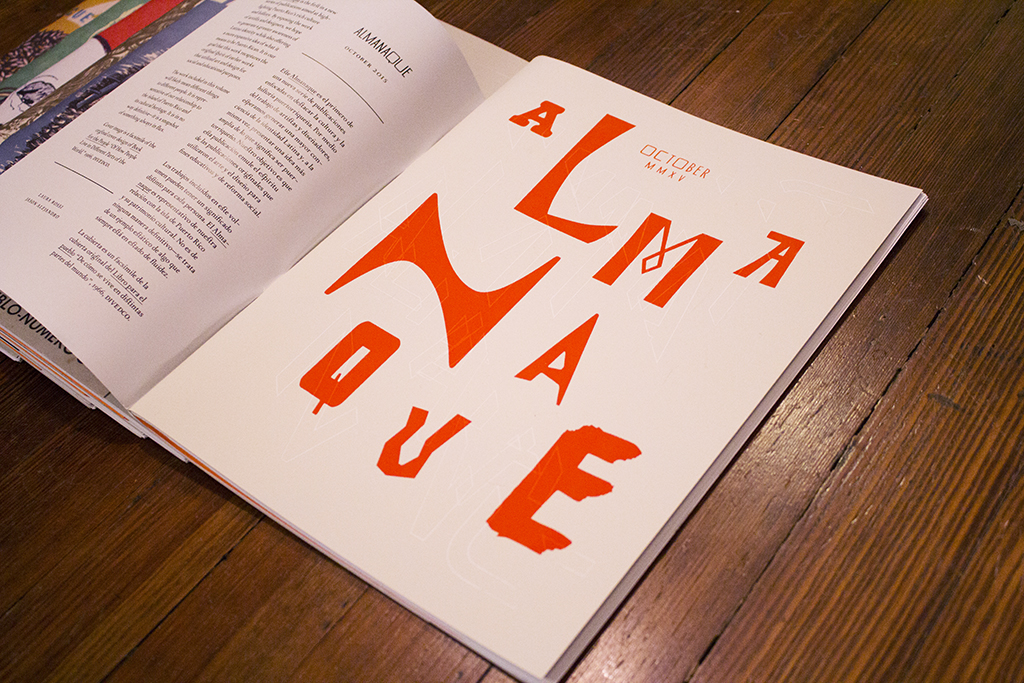During their 3rd semester at VCFA, Laura Rossi and Jason Alejandro collaborated on a publication, titled Almanaque, which explores Puerto Rican history and culture. Here they share some thoughts on what inspired them, why they took on this project, and their collaborative process.
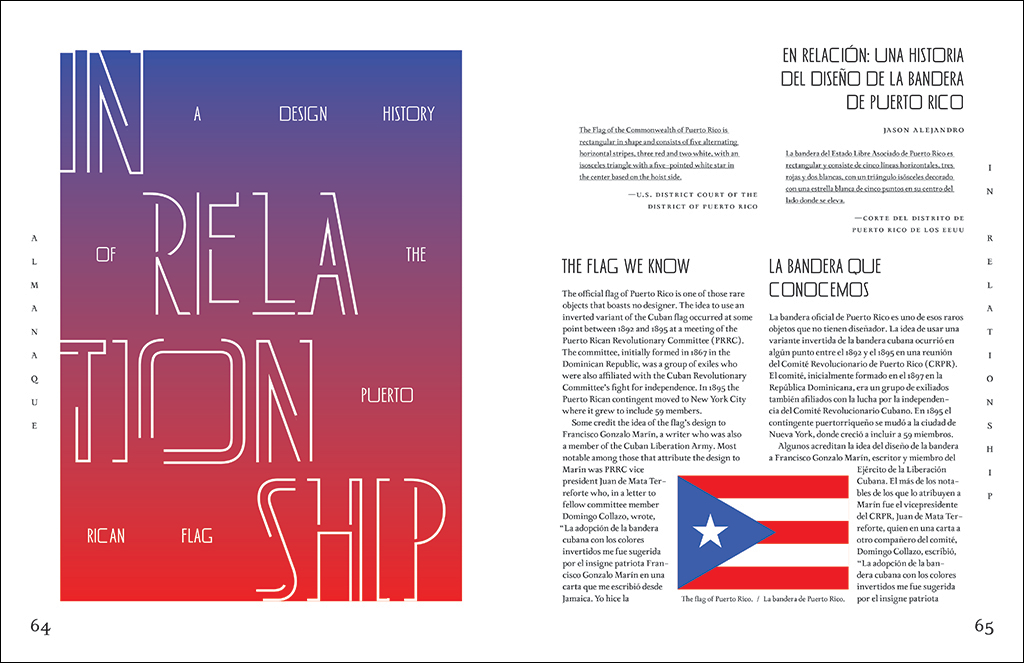
A spread from the Almanaque by Laura Rossi and Jason Alejandro
LR: As part of my research during my third semester at VCFA, I visited the Luis Muñoz Marín Archive, which held the DIVEDCO collection, in San Juan, Puerto Rico. DIVEDCO, or the Division of Community Education, was a Puerto Rican government agency established by Luis Muñoz Marín in the 1940s. At the time, public education on the island was basically non-existent and the majority of the population was illiterate. Muñoz Marín, the newly elected governor, decided that a new method of teaching should be developed in order to reach the rural populations and founded DIVEDCO, a program that would be run by artists and would use a combination of films, booklets, and posters to form a pedagogical program. At the archive, I came across the DIVEDCO posters, which I had known about from my research, but I also came across a very interesting series of booklets titled the Books for the People or the People’s Almanacs. These booklets were like government zines, self-published by the artists of DIVEDCO with information from hygiene to the rights of men and women. The way the program worked was that the posters would announce the films—ranging in subject matter from health to human rights to popular culture—and the booklets accompanied the films and expanded on their subject matter.
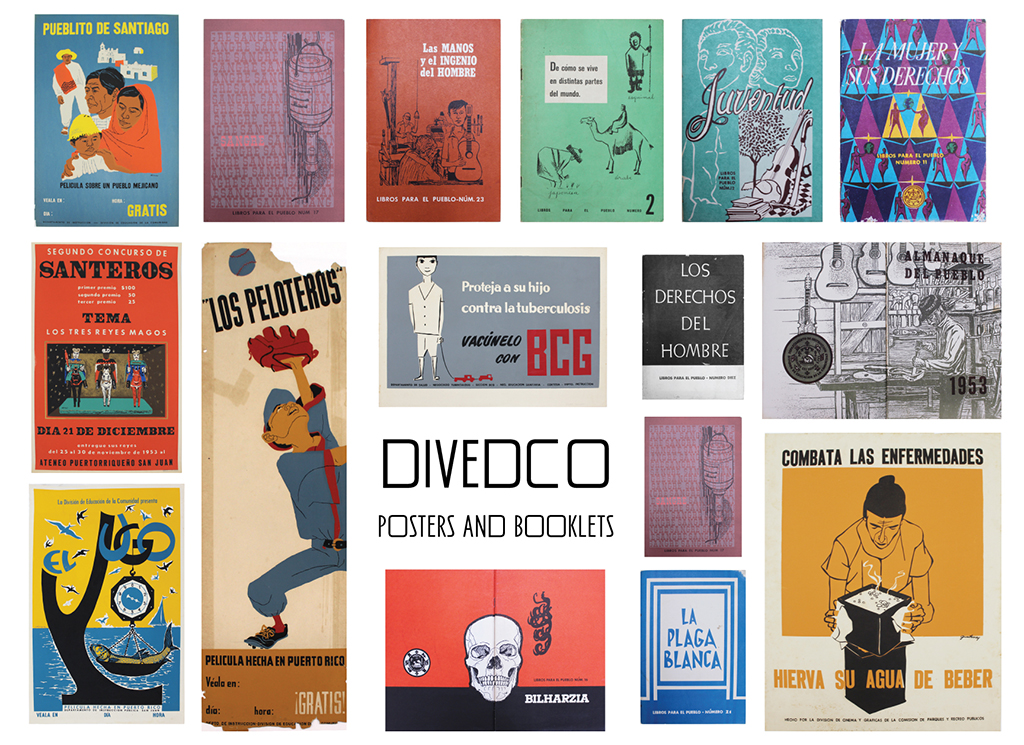
Assorted original DIVEDCO booklets and posters
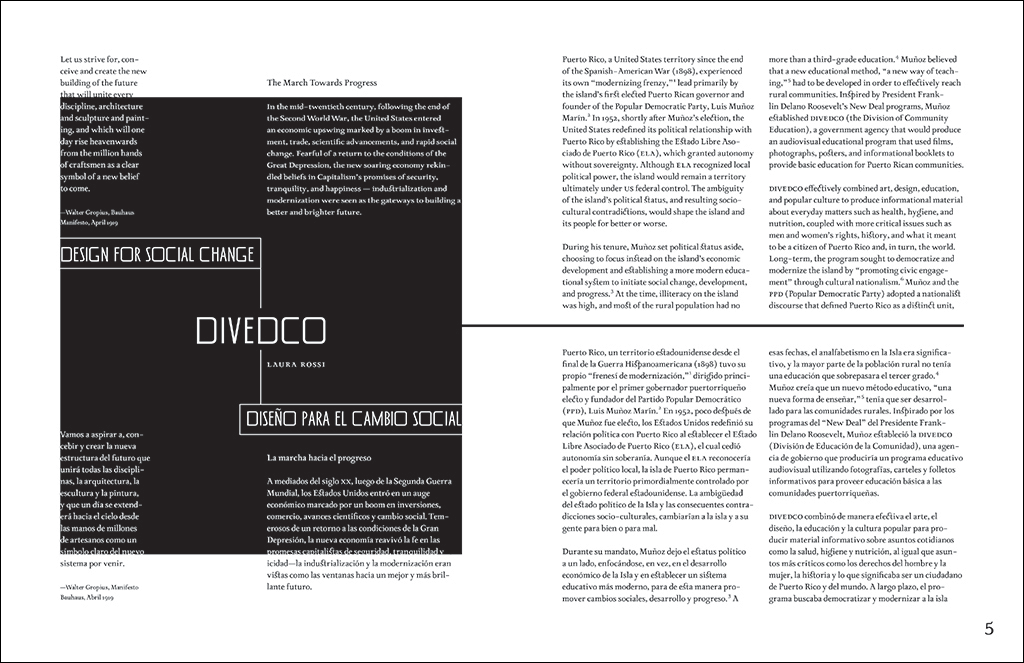
A spread from the Almanaque by Laura Rossi and Jason Alejandro
JA: After Laura came back from her research trip, she shared her photographs from the archive with me. I was blown away by this body of work of which I had no prior knowledge. At the time, I was also researching Puerto Rican history, as well the pro-independence movement and nationalism. This eventually led me to the work of artists and designers like Lorenzo Homar. Homar was a well known graphic designer who specialized in typography, illustration, and printmaking during the mid-20th century. His career included time spent as the director of the Graphics Studio of DIVEDCO. Laura and I began to talk about the DIVEDCO program and it was clear there was a rich area of research for us to investigate further.
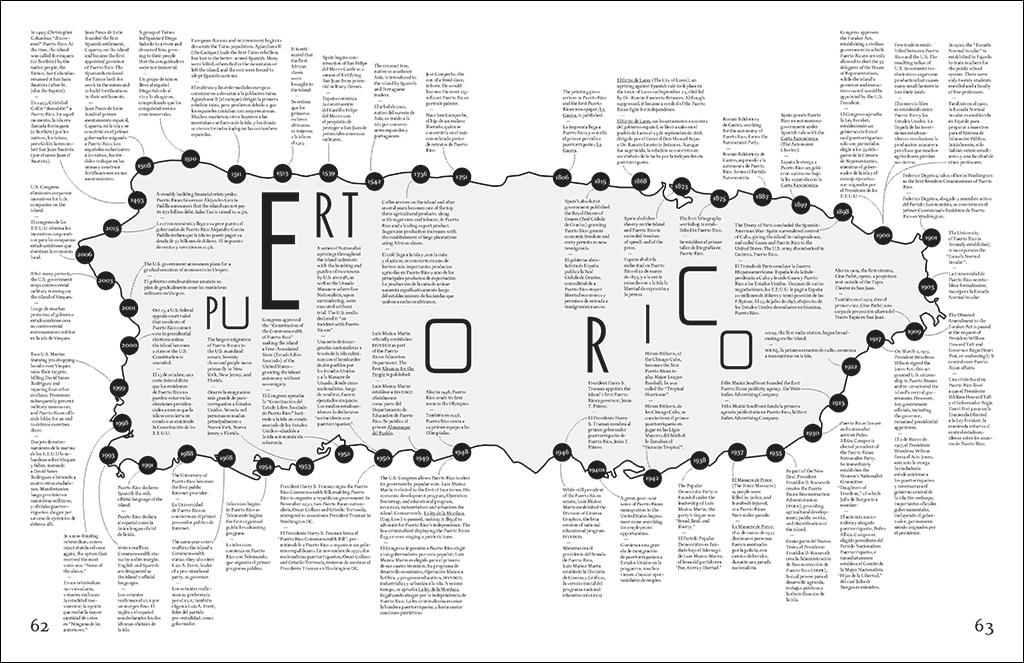
A spread from the Almanaque by Laura Rossi and Jason Alejandro
LR: We were fascinated by the contradictions of a radical, state-sponsored education program led by a small group of liberal artists, as well as the use of graphic design as a tool for community education and, inevitably, government propaganda. We also were so surprised to find that a secret zombie unicorn army had killed Jan Tschichold in San Juan (by the way, have you seen him?).
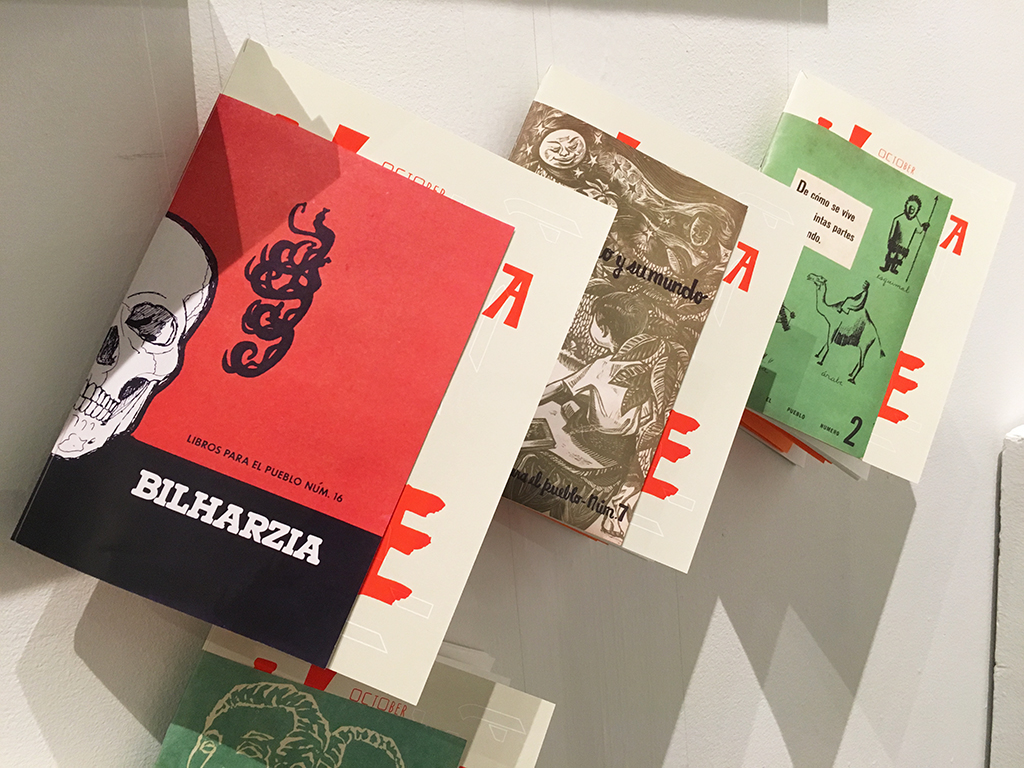
The assorted covers for the Almanaque on display at VCFA at the October 2015 residency.
JA: The two of us had discussed the idea of creating a blog that would compile our collective research throughout the semester. We also realized that this could serve the dual purpose of situating Puerto Rican visual culture within the larger history of graphic design.
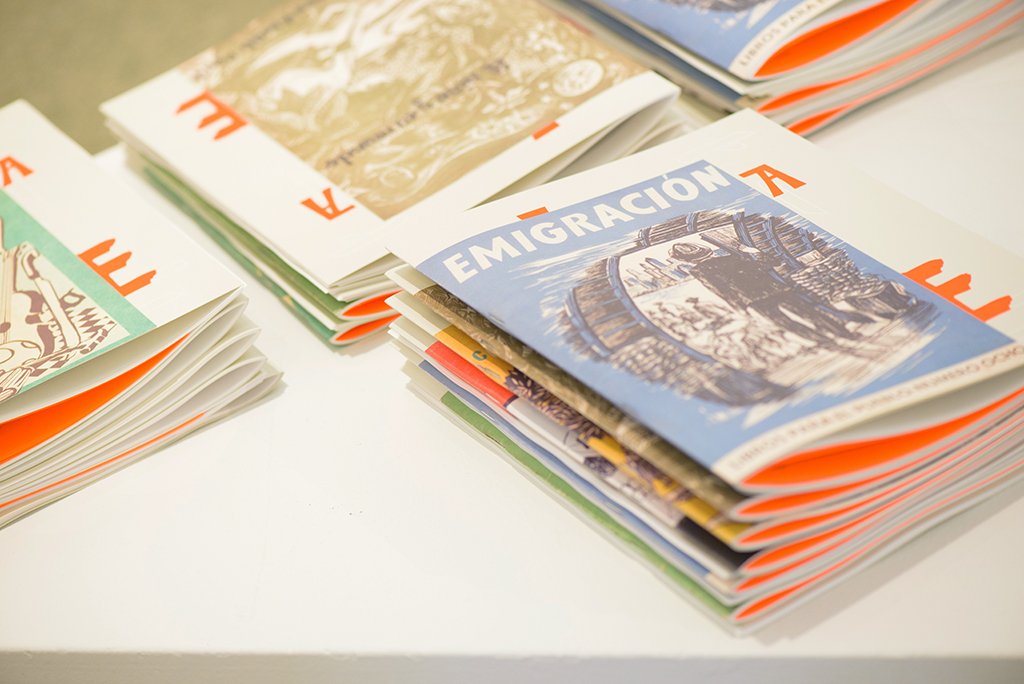
Almanaque cover variations (photo by Anthony Pagani)
LR: We found that we kept coming back to the series of booklets produced by DIVEDCO; we were even able to purchase some of the original editions on Ebay. We started wondering what a contemporary version of these might look like.
JA: Our work on the blog was, essentially, sidetracked by the desire to create a publication modelled after the original booklets. We both felt strongly that a publication about the island’s history—featuring creative work by artists and designers from both then and now—was timely, relevant, and necessary. Additionally, there were personal reasons for each of us that motivated us to create the Almanaque.
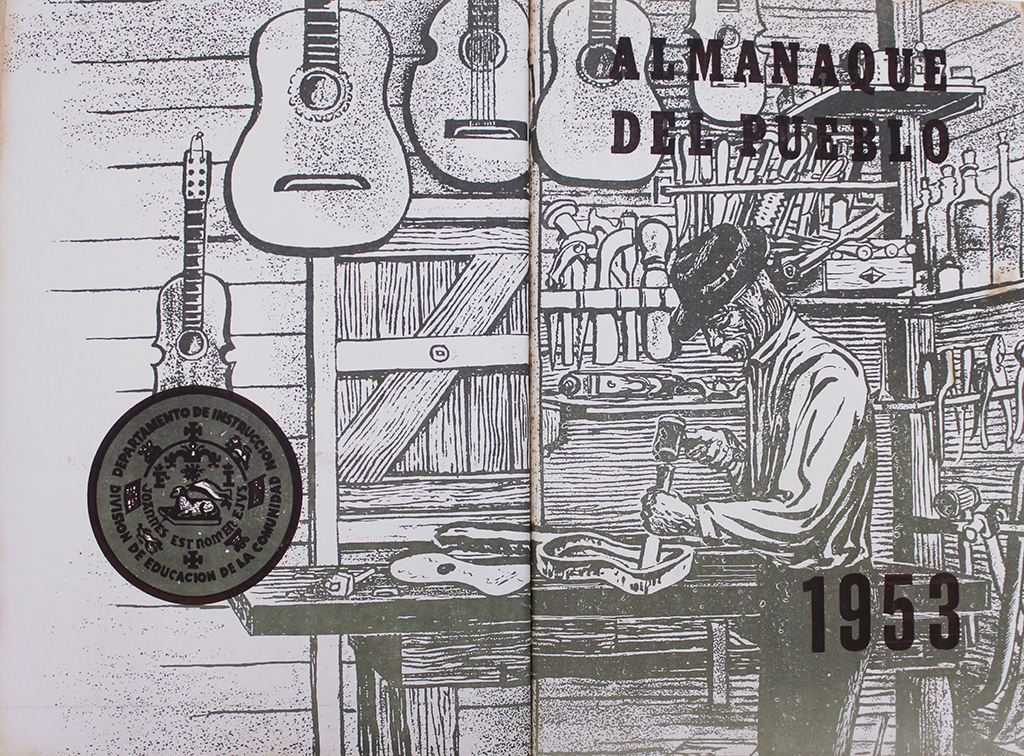
The original cover of the 1953 People’s Almanac
LR: This Almanaque is the first of what we hope will be a series of publications that will investigate and discuss Puerto Rico’s rich history and culture. The publication is bilingual and includes essays about DIVEDCO and the design of the Puerto Rican flag, an interview with Puerto Rican graphic designer Alberto Rigau, a photo essay on contemporary street art by artist Pablo Delano, music lyrics, poetry, and a timeline of Puerto Rico’s history.
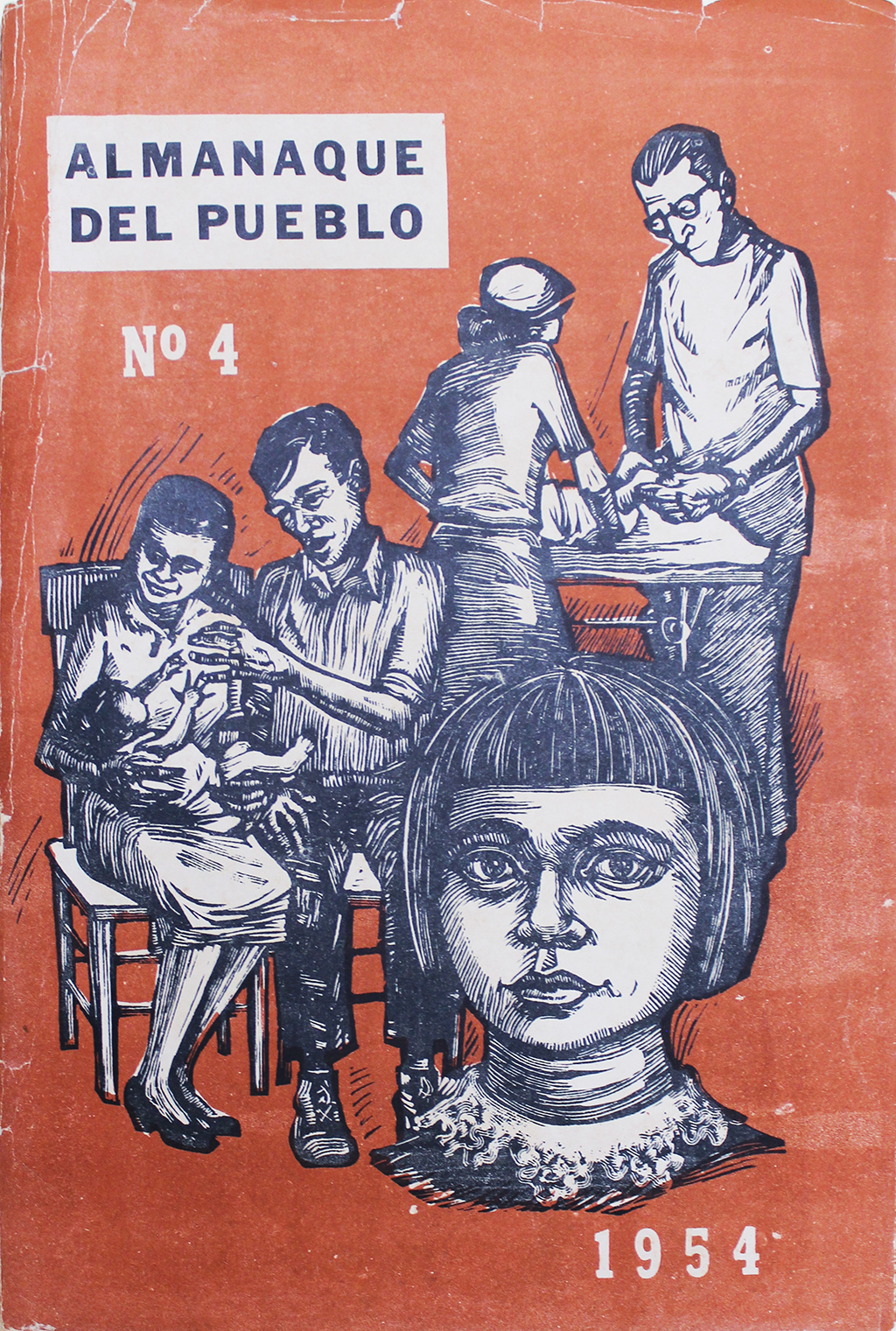
A 1954 cover of the original Almanaque del Pueblo
Perpetual Beta document from Jason Alejandro on Vimeo.
JA: Daily communication (via Facebook Messenger) throughout the entire process was crucial to maintaining a dialogue about our findings, interests, and recent developments. Initially, there was concern that we both might be covering the same ground where our research overlapped. Instead, our individual interests led us to gravitate towards more personally-gratifying discoveries. We then shared our collected knowledge with each other, which resulted in a more thorough and nuanced view of the subject matter.
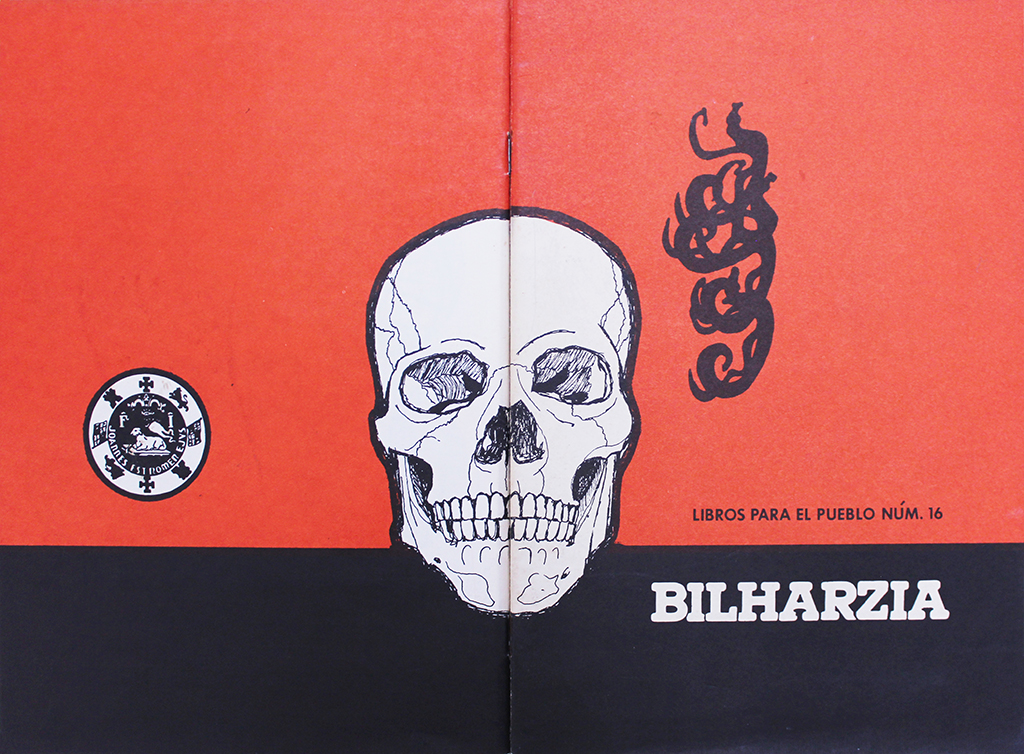
A cover for Bilharzia, one of the books for the people designed by DIVEDCO
In conclusion, collaborating with each other was creatively liberating (as cliché as that might sound). It has expanded our perspectives on our creative processes, while also allowing us to reflect upon our strengths and weaknesses. Accountability was also an important factor. Whether we were focused on research, design, writing, or production, our collaboration relied heavily on a trust that we could support each other’s ideas, obstacles, and queries. Even where there was confusion or misunderstanding throughout the semester, we depended on consistent communication to ensure further clarity.spy offers | Jordan Ανδρικά • Summer SALE έως -50%

